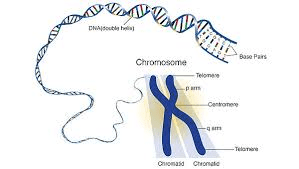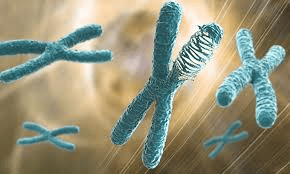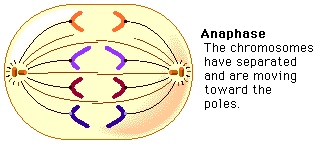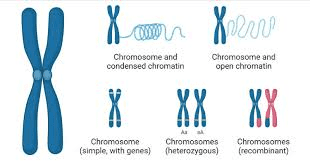chromosome morphology deals with chromosome structure. This has extensive applications in identifying chromosomal aberrations, genetic diseases such as Down’s syndrome, klinefelter’s syndrome and other genetic diseases.
The Centromere
Each centromere contains a constricted region (primary constriction). Centromeric region is heterochromatic. A region of chromosome is described as heterochromatic if the region is made up of heterochromatin. As we shall see later, heterochromatin are made up of inactive DNA.
Functions of the Centromere
Maintenance of cohesion of sister chromatids: sister chromatids remain attached at the centromere before anaphase.
Mediation of chromosome movement during anaphase: The microtubules of the spindle fibres are attached to the kinetochore of the proteinaceous platform that attaches to the microtubules of spindle fibers during anaphase.
The critical region that supports the second function above is the CEN region of the centromere. In yeast, the CEN region consists of 100 bp of repetitive sequences divided into 3 regions. Mutational analysis revealed that Regions I and II affect segregational activity, but mutation in the central CCG triplet within region III completely inactivates centromere function.
Chromosome Classification Based on the Number of Centromeres

1. Acentric Chromosomes
This refers to chromosomes that lack a centromere. In fact such chromosomes do not exist in nature in view of the crucial functions of centromeres in chromosome behavior.
They are formed as a result of structural aberrations. Such chromosomes are more appropriately referred to as acentricfragments.
2. Monocentric Chromosomes
Chromosomes having one centromere per chromosome are known as monocentrics. This is the usual case. Thus, normal chromosomes are usually monocentric.
3. Dicentric Chromosomes
These are chromosomes having two centromeres per chromosome. They arise from single chromosomal breaks to give a dicentric and acentric fragments.
The acentric fragment is not incorporated into any daughter cells and is lost. The dicentric fragment has centromeres on 2 sister chromatids, it forms an anaphase bridge.
Read Also : Juvenility, Maturity and Senescence of Plants
Chromosome Classification Based on Centromere Location

1. Centromere Located in the Middle of the Chromosome
Such centromere are refer to as median centromeres and the chromosome is described as the metacentric chromosome.
2. Centromere Located near the Middle of the Chromosome
This is refer to as sub-median centromere, and the chromosome is called a submetacentric chromosome.
3. Centromere Located near the end of the Chromosome
Such centromeres are refer to as sub-terminal centromere to give acrocentric chromosome.
4. Centromere Located at the end of the Chromosome
Such centromeres are refer to as terminal centromere. And the chromosomes are described as telocentric.
Telocentric chromosomes may arise by centromere miss-division or breakage induced within the centromere. Telocentrics are unstable because their formation involves fracturing of the centromere. Thus, they are rare in nature.
- Metacentric chromosome

b) Sub-metacentric chromosome

c) Sub-elocentric chromosome

d) Telocentric chromosome
Figure showing different types of chromosomes
Shapes of Chromosomes during anaphase

During anaphase chromosome moves to the opposite poles. The spindle fibres originating from the poles are attached to the chromosomes at their centromeres. Thus, the chromosomes assume characteristics shapes because the centromere is in the lead while the arms trail behind.
Metacentric: V-shape Acrocentric: rod shape Sum-metacentric: J-shape
In summary, chromosomes have characterized shaped based on different criteria. This is of immense important in agriculture and plant disease diagnoses.
Chromosomes can be classified based on centromere location and size. Based on centromere location, we may have metacentric, sub-metacentric, sub- telocentric and telocentric chromosomes. Existence of telocentric chromosomes is still being debated.
Read Also : Determination of Physico-Chemical Parameters of Water






